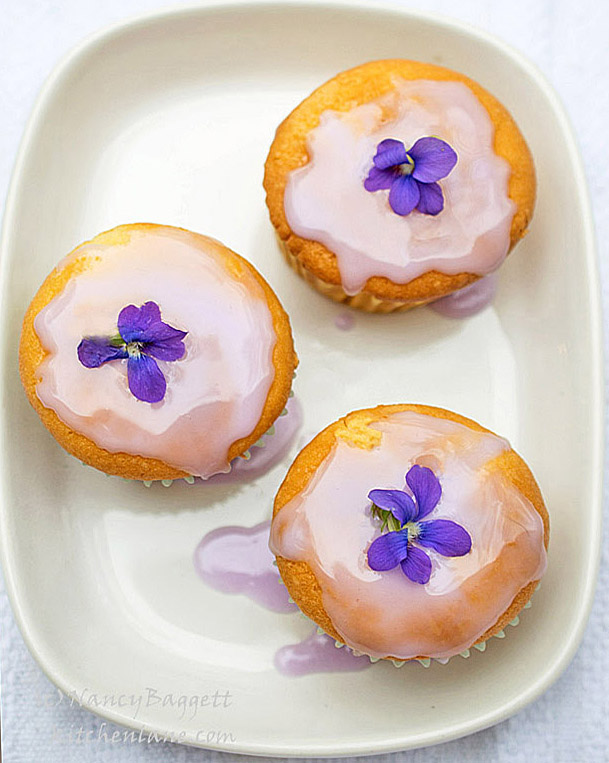 Every spring my shade garden rewards me with a whole variety of edible violets, some cultivated European types, some indigenous American wild ones. And every year I discover a new way to cook with sweet and wild woodland violets and turn them into a special culinary treat. This season’s recipe is amazingly simple, yet eye-catching and tempting: A quick, naturally pretty Fresh Violet Glaze that makes a fine topper for festive cupcakes, cakes, sweet breads, and cookies. As is true in many of my recipes, I prefer to avoid commercial food dyes and rely instead on botanical pigments, in this case from the fresh violet petals. This involves just harvesting some sweet or wild violets and microwaving them with a little water so their wealth of nutrients and bright pigments release. Once the exuded violet liquid is strained, I stir it together with powdered sugar, a squeeze of lemon juice, and a few drops of vanilla until smooth. Then it’s time to drizzle, spoon, smooth on, or swipe with a finger for a little lick!
Every spring my shade garden rewards me with a whole variety of edible violets, some cultivated European types, some indigenous American wild ones. And every year I discover a new way to cook with sweet and wild woodland violets and turn them into a special culinary treat. This season’s recipe is amazingly simple, yet eye-catching and tempting: A quick, naturally pretty Fresh Violet Glaze that makes a fine topper for festive cupcakes, cakes, sweet breads, and cookies. As is true in many of my recipes, I prefer to avoid commercial food dyes and rely instead on botanical pigments, in this case from the fresh violet petals. This involves just harvesting some sweet or wild violets and microwaving them with a little water so their wealth of nutrients and bright pigments release. Once the exuded violet liquid is strained, I stir it together with powdered sugar, a squeeze of lemon juice, and a few drops of vanilla until smooth. Then it’s time to drizzle, spoon, smooth on, or swipe with a finger for a little lick!
Best Violets for Cooking
For culinary purposes, the best violets are the scented Old World kind: Their scientific name is Viola odorata, and they are in fact indigenous to both Europe and Asia. They come in numerous colors and are intensely fragrant and flavorful. (In contrast, our native New World woodland violets, Viola sororia, are just as pretty and also entirely edible, but aren’t noticeably tasty or “perfumy. “) If you have ever tried a well-made Aviation cocktail or sampled a violet syrup or liqueur, you’ll recall the mesmerizing, musky-sweet floral taste and aroma that makes odorata violets unique and prized in gourmet cooking and confectionery. France is particularly associated with using violets in cookery. The city of Toulouse, France, holds a sweet violets festival every February.
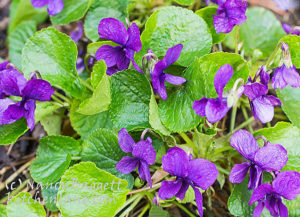
‘Clive Groves’ Viola Odorata
The ‘Clive Groves’ odorata variety, shown here, and in the shot below it, is the earliest in my personal collection to come up in the yard. If you’re thinking of trying your hand at growing scented violets, this one’s a good choice. It’s hardy and a good bloomer with richly scented deep magenta-purple flowers. Here in central Maryland it brightens my little patch throughout all of March! (The Groves family is a well-known grower of sweet violets in England, though I got my assortment of very healthy starter plants here in the U.S. from a nursery in South Carolina.)
Varieties of Sweet Violets
I’ve been intrigued with several other beautiful sweet violets, as well. The vivid crimson ones in the bowl of floating violets (which makes a fab fancy dinner table arrangement, BTW) are called ‘Reid’s Crimson’. The medium pink ones are known as ‘Josephine’. The bright purple blooms in the center and upper left of the arrangement are our “common” (though gorgeous) wild Viola sororia. And the blue and white are called sororia priceana. Both grow in woods and meadows in many states, though in some areas hungry deer have reduced their numbers. If you are lucky enough to stumble upon boldly scented violets in the U. S., they are imported odorata ones that originally escaped somebody’s garden and naturalized!
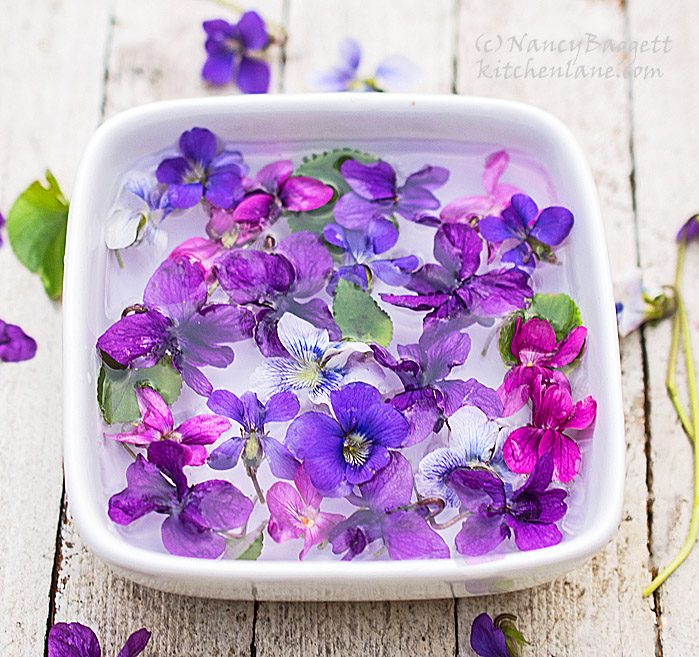
Table Arrangement of Mixed Sweet and Wild Violets
The following recipe, like all of the other violet recipes listed, can be readied with either the European scented violets or the not-so-plain old American sororia kind. (Please remember that Viola violets are not the same as African violets popular as houseplants; African violets aren’t t edible. ) Note that the purple color pigments in all types of purple violet at first look bluish-green when extracted in water, but will gradually turn pinkish-purple when a few drops of lemon juice are stirred in.
- ¾ to 1 cup fresh purple violet petals (all green parts discarded)
- 2 tablespoons water
- 1 to 1¾ cups powdered sugar, or more as needed for drizzling or spreading consistency
- ⅛ teaspoon vanilla extract
- A few drops fresh lemon juice, as desired
- 1 to 2 teaspoons commercial violet syrup, optional
- Put the violet petals in a 1- or 2-cup microwave-safe glass measure. Stir in the water. Cover and microwave the cup for 1 minute on full power. Stir and then continue to microwave, stopping and stirring at 30-second intervals until the petals are limp and the water is bluish-green.
- Let cool. Then press as much violet liquid as possible through a fine sieve into a small bowl; discard the spent petals.
- Stir 1 cup powdered sugar and the vanilla into the liquid. Gradually add drops of lemon juice, stirring, continuing until the mixture smooth and turns a purple shade you like. If you want a sweet violet flavor, stir in the violet syrup, then add enough more powdered sugar to produce the consistency desored.
More Violet Recipes to Try
For many other recipes that celebrate edible violets check out the following posts:
http://kitchenlane.com/2012/04/dye-free-violet-decorating-sugar.html

http://kitchenlane.com/2015/04/violet-berry-trifle-puddings_24.html
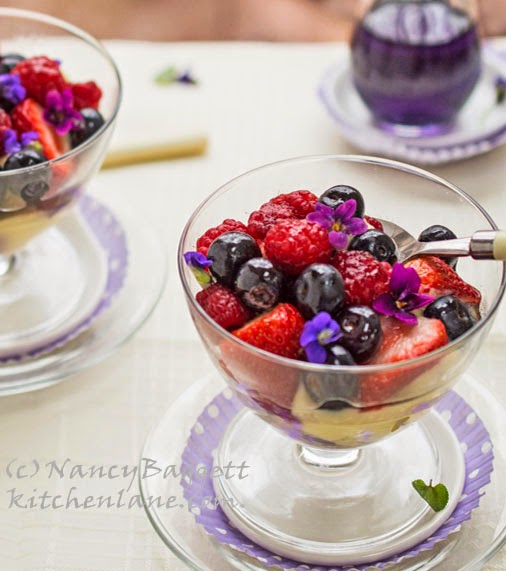
http://kitchenlane.com/2015/04/homemade-violet-syrup.html
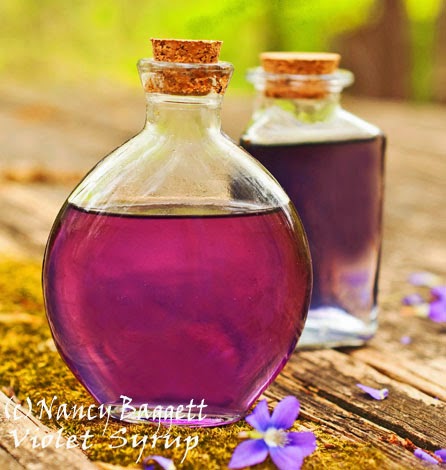
http://kitchenlane.com/2017/04/homemade-violet-liqueur.html
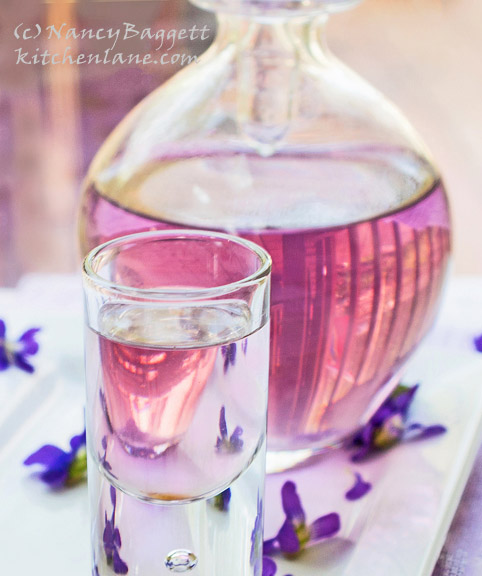
http://kitchenlane.com/2014/05/wild-violets-make-violet-lemonade.html
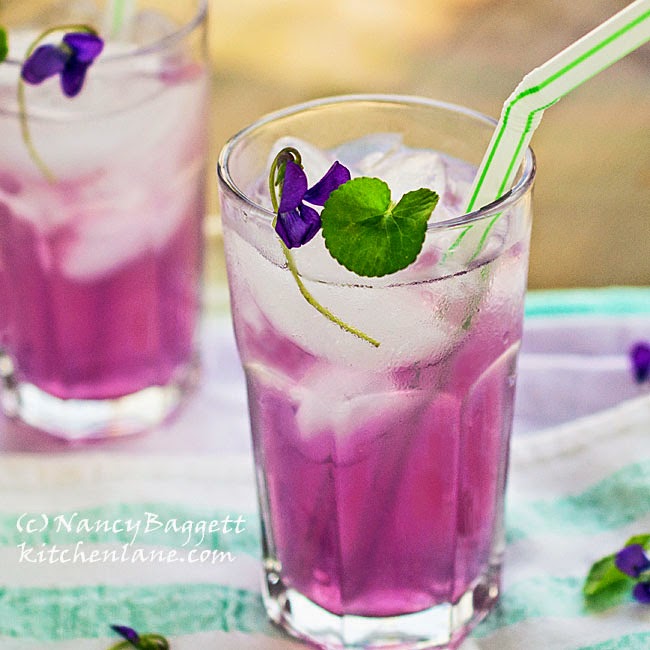
http://kitchenlane.com/2014/05/tomato-salad-with-violet-dressing.html
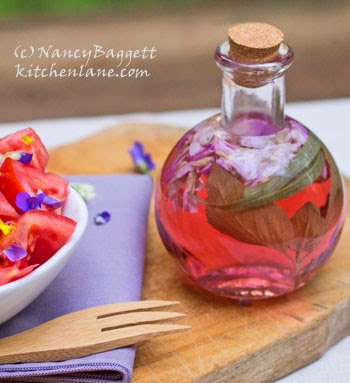
http://kitchenlane.com/2011/04/decorating-pastries-with-fresh-and.html
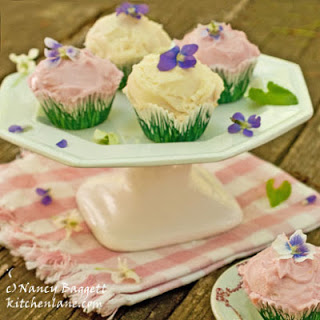
http://kitchenlane.com/2013/04/violet-salad-violet-vineagrette.html
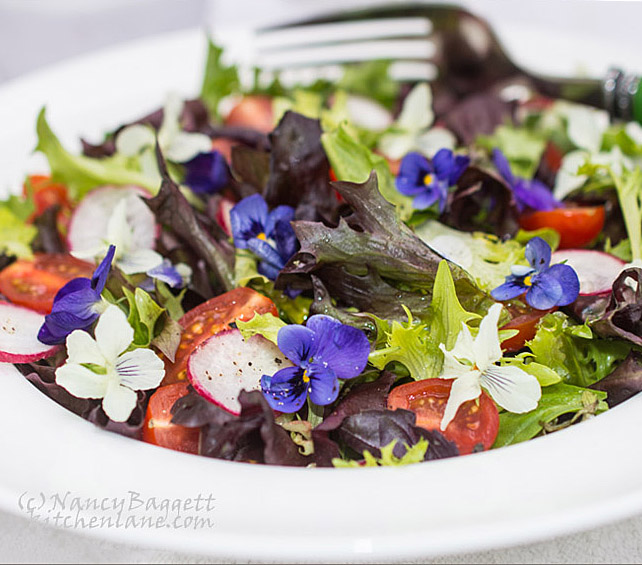

Leave a Reply